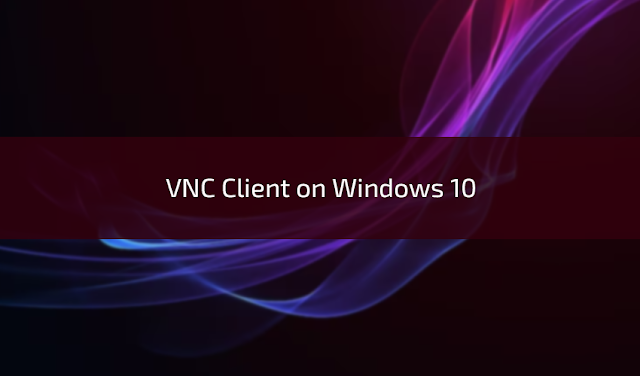Using VNC Client on Windows 10
Whether you’re working from home, assisting a friend with their computer issues, or managing servers in different locations, a reliable VNC client for Windows 10 can be a game-changer. In this guide, we’ll take you through the world of VNC, explaining what it is, why you might need it, and how to set up and use a VNC client on Windows 10.
What is a VNC Client?
Before diving into the specifics, let’s clarify what VNC is. VNC stands for Virtual Network Computing, and it’s a remote desktop protocol that allows you to control and interact with a remote computer over a network or the internet. A VNC client is the software you use to access and control a remote computer, while a VNC server is the software running on the remote computer that shares its desktop. With a VNC client, you can view the remote desktop, perform actions, and even transfer files as if you were sitting in front of the remote computer.
Why Use a VNC Client on Windows 10?
There are several scenarios where using a VNC client on Windows 10 can be incredibly beneficial:
- Remote Work: With the rise of remote work, a VNC client allows you to access your office computer from home or vice versa, ensuring you have access to all your files and applications.
- Technical Support: If you’re the tech-savvy friend or family member in your circle, a VNC client can help you provide remote technical support, troubleshoot issues, and perform repairs without physically being present.
- Server Management: If you’re responsible for server management, having a VNC client on your Windows 10 machine is a practical way to access and administer remote servers and data centers.
- Multimonitor Setup: VNC clients often support multimonitor setups, making it easier to work on multiple screens when connected to a remote computer.
- File Transfer: Many VNC clients include file transfer capabilities, allowing you to transfer files to and from the remote computer effortlessly.
- Cross-Platform Compatibility: VNC is a cross-platform protocol, so you can use a VNC client on your Windows 10 PC to access remote computers running Windows, Linux, macOS, and more.
Setting Up a VNC Client on Windows 10
To get started with a VNC client on Windows 10, follow these steps:
1. Choose a VNC Client Software
There are several VNC client software options available for Windows 10. Some popular choices include RealVNC, TightVNC, UltraVNC, and TigerVNC. Select the one that best suits your wants and preferences.
2. Install the VNC Client
Download and install your chosen VNC client software on your Windows 10 machine. The installation process is typically straightforward, following the standard Windows installation procedures.
3. Obtain Connection Details
To connect to a remote computer, you’ll need the connection details:
- IP Address or Hostname: You need the IP address or hostname of the remote computer. If it’s on a local network, use the local IP address. If it’s over the internet, use the public IP address or domain name.
- VNC Server Port: By default, VNC servers use port 5900. However, the port number may differ depending on the VNC server software and configuration. Make sure to have the correct port number.
- Password or Authentication: You may need a password or authentication credentials to connect to the remote computer. Make confirm you have this information ready.
4. Launch the VNC Client
Once the VNC client is installed, launch the application.
5. Configure the Connection
In the VNC client, you’ll find options to configure the connection. Enter the IP address or hostname of the remote computer in the “Server” or “Host” field.
If the VNC server uses a different port, specify it in the “Port” field.
Enter the password or authentication credentials, if required.
6. Connect to the Remote Computer
After configuring the connection details, click the “Connect” or “Connect/Start” button within the VNC client. The client will initiate the connection to the remote computer.
7. Control the Remote Computer
Once connected, you’ll see the remote computer’s desktop within the VNC client window. You can now control the remote desktop just as if you were sitting in front of it. You can move the mouse, type on the keyboard, open applications, and perform any necessary tasks.
8. File Transfer (If Supported)
If file transfer is supported by your VNC client, you can easily transfer files between your local Windows 10 machine and the remote computer.
Tips for Using a VNC Client Effectively
- Security: Ensure the connection is secure. If you’re accessing a remote computer over the internet, consider using a VPN or setting up an SSH tunnel to encrypt the VNC connection.
- Authentication: Use strong and unique passwords for VNC connections to prevent unauthorized access.
- Screen Resolution: Adjust the screen resolution settings within the VNC client to match your local display for a smoother experience.
- Performance: VNC client performance can vary depending on your network and the remote computer’s specifications. Experiment with different settings to optimize play performance.
- Logout or Lock: Remember to log out or lock the remote computer when you’re done to maintain security.
- Keep Software Updated: Ensure that your VNC client is up to date to benefit from security patches and improved performance.
Conclusion
Using a VNC client on Windows 10 is a valuable tool for remote work, technical support, server management, and much more. It opens up a world of possibilities, allowing you to access and control remote computers as if you were physically present. By following the steps outlined in this guide and adhering to best practices, you can harness the power of VNC to make your computing experience more flexible, efficient, and accessible from virtually anywhere.

.jpg)

Comments
Post a Comment